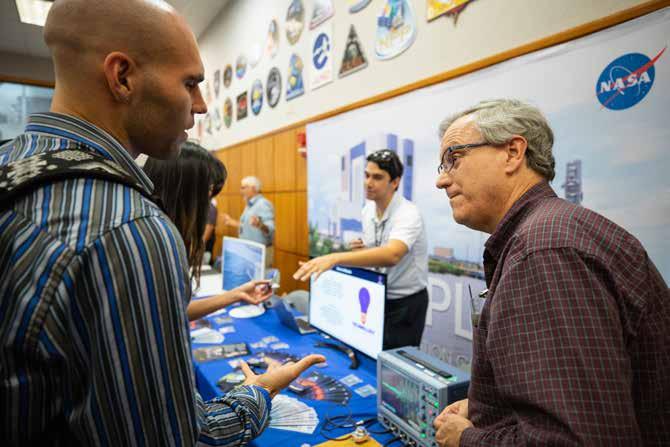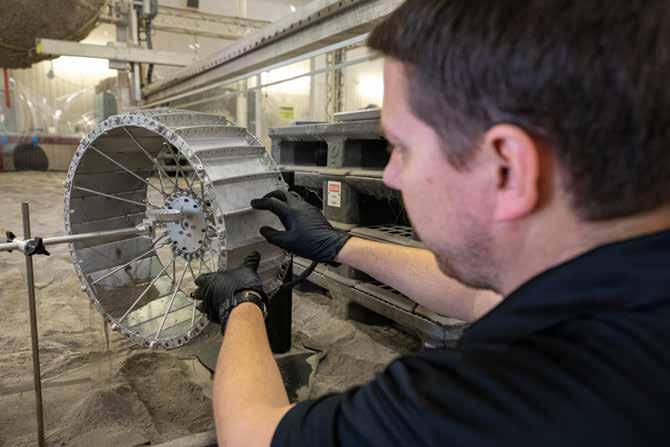
1 minute read
Engineering


Advertisement
ER&T also worked on instruments to explore the Moon, including the Mass Spectrometer observing lunar operations (MSolo), a mass spectrometer slated to fly to the Moon as part of NASA’s Commercial Lunar Payload Services (CLPS), and the Polar Resources Ice Mining Experiment (PRIME-1), a drill combined with a mass spectrometer.
Nearly 50 exhibitors gathered to demonstrate new technologies and innovations during the center’s Innovation Days – one of several events sponsored by ER&T focused on fostering and encouraging an innovative culture at Kennedy. Showcase participants included individuals from multiple directorates, programs, and organizations throughout Kennedy.
ER&T supported the agency’s Space Systems Development and Operations efforts through dust mitigation work. This included preparing for dust testing of various seals for the wheel motors on NASA’s Volatiles Investigating Polar Exploration Rover, or VIPER, on March 17, 2020. VIPER is slated to explore the Moon in 2023.
ER&T also supported the agency with logistics reduction technologies, such as NASA’s Orbital Syngas Commodity Augmentation Reactor, or OSCAR, which functions by processing small pieces of trash in a high-temperature reactor. On Dec. 11, 2019, OSCAR was a payload on Blue Origin’s New Shepard suborbital rocket.
NASA selected three U.S. companies to design and develop human landing systems (HLS) for the agency’s Artemis program on April 30, 2020. ER&T has provided support to HLS through lander ground operations functions.
ER&T supported In-Situ Resource Utilization efforts, including the Gaseous Lunar Oxygen from Regolith Electrolysis (GaLORE) project, which is investigating turning lunar regolith into oxygen. Seen here, Kevin Grossman, project lead for GaLORE, inspected a piece of hardware inside a laboratory on July 21, 2020.











